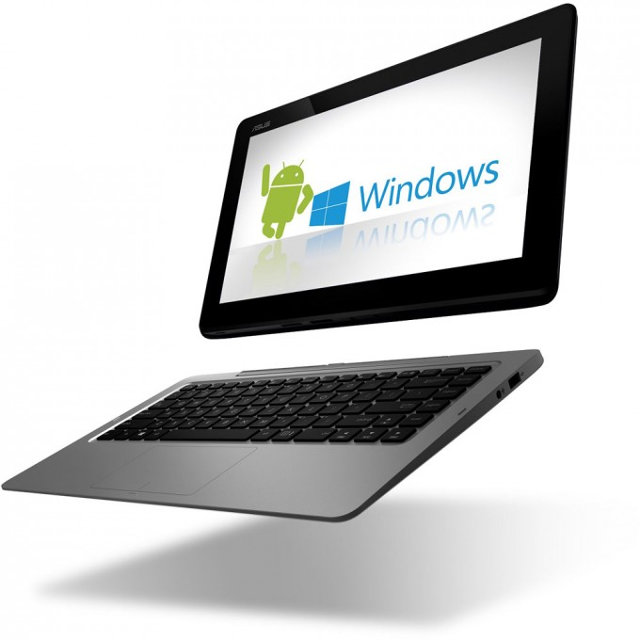During CES 2014 pre-opening keynote, Intel showcased a laptop capable of instantaneously switch between Windows and Android by the press of a button, and separately, AMD also announced dual OS support with Android and Windows 8 running simultaneously on a computer thanks to a version of Bluestacks optimized for AMD APUs. So we can expect several hybrid laptop + tablet computers, let’s call it a “lapblet”, running Windows 8 and Android this year, and one of them is Asus Transformer Book Duet.

Transformer Book Duet (TD300) Specifications:
- Processor – Intel Core i7 processor
- GPU – Intel HD graphics
- System Memory – 4GB DDR3L 1600 RAM
- Storage:
- Tablet – 128GB SSD + Up to 64GB Micro SD card
- Dock – Up to 1TB HDD
- Display – 13.3-inch Full HD IPS multi-touch display
- Connectivity – 802.11ac Wi-Fi, Bluetooth 4.0 + EDR, and 10/100M Ethernet
- Camera – Front-facing HD camera with a built-in digital mic for video chats.
- Battery – 38WHr battery, estimated battery life around 5 hours in Windows 8.1 and 6 hours in Android 4.2.2.
- Tablet ports – Micro SD card, Headphone jack, DC jack
- Keyboard dock ports – 1 x USB 3.0, 2 x USB 2.0, 10/100Mbit/s LAN, HDMI 1.4, audio combo jack, DC jack
- Dimensions:
- Tablet – 342.7 x 216.3 x 12.9mm
- Dock – 340.9 x 217.6 x 16mm
- Weight – Total: 1.9kg
This computer runs Windows 8.1 and Android 4.2.2, and the company claims it can run faster than ARM based devices. Asus says it does not use OS virtualization, but I guess they mean it does not use a type 2 (hosted) hypervisor, but instead a type 1 (baremetal) hypersivor.
Liliputing reports the price should be $599 once it become available, and has given it a quick try.
Thanks to CSilie for the tip.

Jean-Luc started CNX Software in 2010 as a part-time endeavor, before quitting his job as a software engineering manager, and starting to write daily news, and reviews full time later in 2011.
Support CNX Software! Donate via cryptocurrencies, become a Patron on Patreon, or purchase goods on Amazon or Aliexpress




